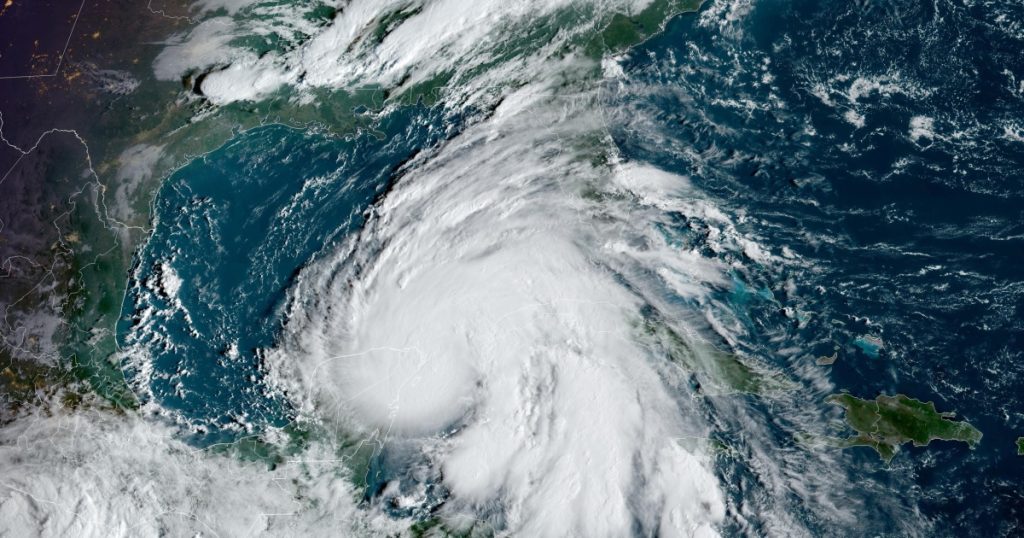Hurricane Helene made landfall in Florida’s Big Bend region as a Category 4 hurricane with maximum sustained winds of 140 mph. The eye of the storm hit about 10 miles west-southwest of Perry, Florida, around 11:10 p.m. ET on Thursday night. It quickly moved inland, reaching southern Georgia as an “extremely dangerous” Category 2 hurricane with winds of 110 mph. Forecasters warned of a potential wind swath over 400 miles wide and the possibility of “unsurvivable” storm surge. States such as Florida, Georgia, North Carolina, and South Carolina declared emergencies in preparation for the storm.
Flooding is a major concern in North Carolina, Georgia, and South Carolina as Hurricane Helene continued its path inland. The system initially developed into a tropical storm in the western Caribbean Sea earlier in the week, causing flooding in the Cayman Islands. Forecasters with the National Hurricane Center provided live updates on the storm’s progression as it moved towards the eastern United States. The impact of the storm on coastal communities and the potential for widespread property damage were major points of concern for residents and emergency response teams.
The strong winds and heavy rainfall brought by Hurricane Helene posed a significant threat to the areas it passed through, leading to widespread power outages and infrastructure damage. Emergency shelters were opened in affected regions to accommodate residents who were forced to evacuate their homes due to the storm. In addition to the physical destruction caused by the hurricane, the psychological impact on residents dealing with the aftermath of the disaster was also a key concern for authorities and mental health professionals.
As the storm continued to move inland, its effects were felt in both urban and rural areas, leading to widespread disruption of daily life. The damage caused by Hurricane Helene highlighted the importance of disaster preparedness and response efforts, with emergency services working tirelessly to assist those in need. The storm served as a reminder of the unpredictability of natural disasters and the importance of communities coming together to support one another in times of crisis.
In the aftermath of Hurricane Helene, cleanup and recovery efforts were underway in the affected states as residents and authorities worked to assess the extent of the damage and begin the process of rebuilding. The storm’s impact on infrastructure, including roads, buildings, and utilities, presented significant challenges for the affected communities. The long-term economic and social impacts of the disaster were expected to be substantial, requiring coordinated efforts from local, state, and federal agencies to support recovery and reconstruction.
Overall, the destructive power of Hurricane Helene underscored the need for effective disaster preparedness and response measures to mitigate the impact of future storms. The resilience of communities affected by the hurricane was tested, but the response and support provided by emergency services and volunteers demonstrated the strength and solidarity of those impacted by the disaster. As the recovery process continued, the lessons learned from Hurricane Helene would inform future efforts to enhance disaster resilience and protect vulnerable populations from the destructive forces of nature.


